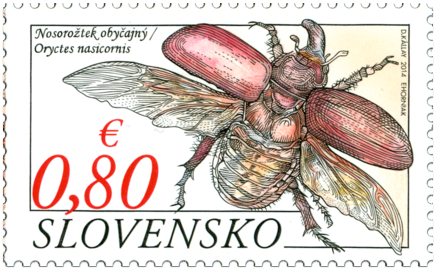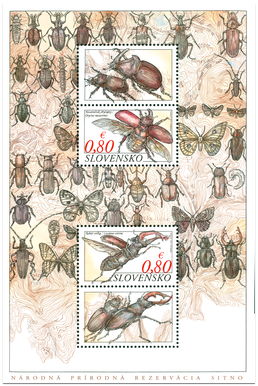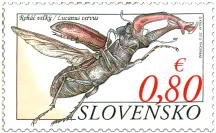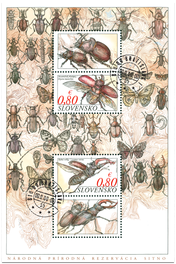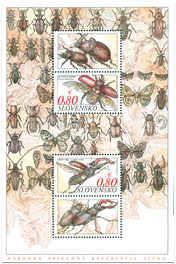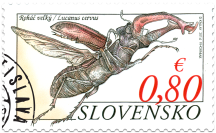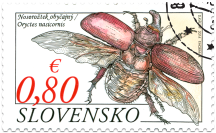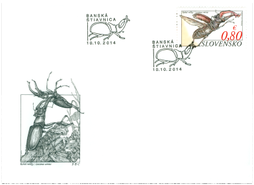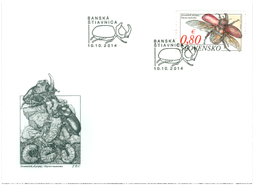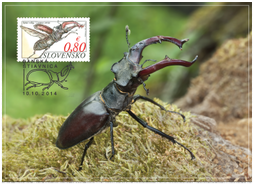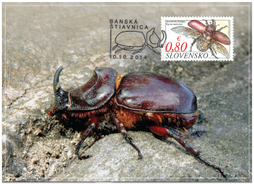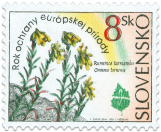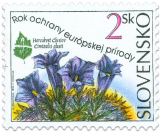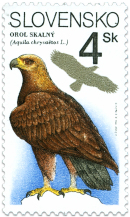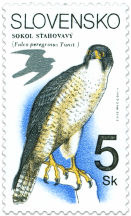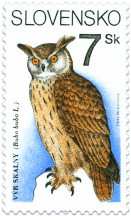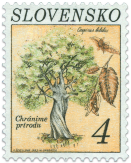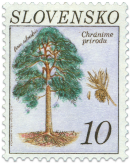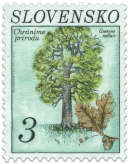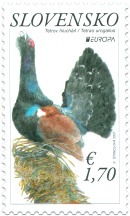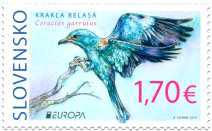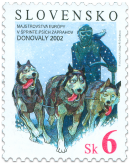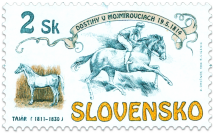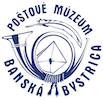This product is not for sale
This product is part of the following products
573 Date of issue
10.10.2014 Face value
0.80 €
The European Rhinoceros Beetle (Oryctes nasicornis) is one of two species of the subfamily Dynastinae (Coleoptera: Scarabaeidae), which lives mainly throughout the tropics, living in Slovakia. Its bizarre proportions imply a special status among our beetles. It grows up to a length of 50 mm and is very dumpy. The male long hornlike curved protrusion makes this beetle unmistakable in comparison with other beetles. The male pronotum is markedly curved to the front in its back section. The body is walnut-brown and glazed on the surface; the underside of the body is covered with long and thick marked reddish-brown hair. The female is similar to the male, but its pronotum is curved mildly and the hornlike protrusion on the head is not developed at all. The female lays eggs into old decaying broadleaf trees, mostly oaks. The larvae emerged from eggs in the decaying trunks, stumps, roots, leaf molds or in the sawdust for two to three years, sometimes for four years. They are white with a strong hardened brown head. The grown-up grub-like larvae pupate in the soil. The cocoon is wrapped up in the case from dirt and wood substance. The development period of the cocoon phase lasts about two months. The fully grown adults can be seen from the end of May. They live couple of months, up to late autumn. A size of the fully grown European Rhinoceros Beetles depends on the quality and amount of the nourishment during the larval development phase. They are active primarily at twilight and night. They frequently fly to light.
The species is spread throughout Europe (except England), Eastern Asia and Northern Africa. However, its number has been decreasing recently in many countries due to removal of old decaying trees and stumps. Most of predators avoid fully grown rhinoceros beetles due to their plated body. The larva’s predator is the Mammoth Wasp (Megascolia maculata), which lays eggs into larvae. This hymenopterous parasite has not been found yet in Slovakia, but its presence in neighbouring Moravia (near Břeclav) has been confirmed recently.
The European Rhinoceros Beetle is classified into protected species of national significance and its social value was set at EUR 230.
Ľubomír Vidlička
Similar products
58 Date of issue
28.02.1995
56 Date of issue
28.02.1995
34 Date of issue
04.07.1994
35 Date of issue
04.07.1994
36 Date of issue
04.07.1994
8 Date of issue
14.05.1993
9 Date of issue
14.05.1993
7 Date of issue
14.05.1993
741 Date of issue
07.05.2021
683 Date of issue
03.05.2019
257 Date of issue
08.02.2002
43 Date of issue
25.10.1994
© 2024 POFIS - Postal philatelic service. All rights reserved

